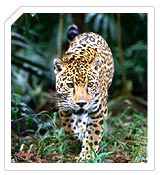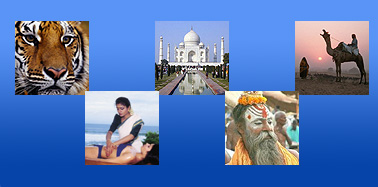|
 Sprawling over an area of 232 sq km, the Keoladeo National Park was formerly known as the Bhartapur Bird Sanctuary. The marshes of Keoladeo, was the private hunting reserve of the Maharajas of Bharatpur. It was developed in the late 19th century by creating small dams and bunds (ponds) in an area of natural depression to collect rainwater and by feeding it with an irrigation canal. Over the years, the lakes attracted great numbers of waterfowl and the Maharajas held grand shoots with family, friends and visiting dignitaries. Two-thirds of the park lies under water, the extent and volume depending on the intensity of the rains. Sprawling over an area of 232 sq km, the Keoladeo National Park was formerly known as the Bhartapur Bird Sanctuary. The marshes of Keoladeo, was the private hunting reserve of the Maharajas of Bharatpur. It was developed in the late 19th century by creating small dams and bunds (ponds) in an area of natural depression to collect rainwater and by feeding it with an irrigation canal. Over the years, the lakes attracted great numbers of waterfowl and the Maharajas held grand shoots with family, friends and visiting dignitaries. Two-thirds of the park lies under water, the extent and volume depending on the intensity of the rains.
Sightseeing at Keoladeo -
The Flora : The park derives its name from the temple of Keoladeo (Shiva) and ‘ghana’ which locally means dense, implying the nature of the vegetation. The one-third of the park is covered by dry deciduous forests (with Acacia, Ber, Kadam and Khajur trees) and extensive grasslands. On the raised ground outlining the wetlands grow a profusion of Acacia trees, where the resident water birds nest, often in large mixed colonies, a spectacular sight during the monsoon.
The Avifauna : Keoladeo is famous as one of Asia’s finest birding areas, with over 380 resident and migrant species, including the Common, Demoiselle and the rare Siberian Cranes. The park supports a population of 375 species of birds, numerous mammals and reptiles. With the onset of winter, migratory birds from all over world come here. They arrive by August and leave in February. Visitors include Coot Snipes, Spanish Sparrow, Red Crested Porhard, Rosy Pelican and Flamingo. The special attraction, however, remains the arrival of the rare Siberian Crane.
The Fauna : It is also an excellent place to observe mammals like Golden Jackal, Striped Hyena, Fishing Cat, Jungle Cat, Nilgai, Sambar, Blackbuck and wild Boar. The park is also rich in Pythons, Spotted Deer, Otters, Monitor Lizards, etc.
Other Attractions : Nearby places of interest are the Government Museum, Bharatpur which gives a glimpse of past splendour. Not far from the museum is the Bharatpur Palace which is an excellent blend of Mughal and Rajput architecture. There is the Lohagarh Fort which remained invincible despite several attacks by the British. Just 32 km from Bharatpur, is the Deeg Palace. This strong and massive fort was the summer resort of the rulers of Bharatpur and has many palaces and gardens.
Park Trips : Covering about 29 sq km, the park has well-defined treks which can be easily covered on foot or on a cycle or you can also hire a rickshaw (the best way). They are available on hire. Rickshaw pullers have been trained by the park management in bird watching and are quite knowledgeable. Boats are also available on hire. A boat trip early in the morning or late evening is quite a rewarding experience. Do not forget to carry a binocular for watching the birds.
Best Season to Visit : Best months are August-November for resident breeding birds and November-March for migrant birds.
Reaching Keoladeo -
Air : Agra (56 km, 5 hours), Delhi (176 km, 5 hours) and Jaipur (176 km , 6 hours), all of which have airports.
Rail : The Bharatpur railway station is 6 km from the park.
Road : Bharatpur is well connected by road from all the major destinations of Rajasthan and neighbouring states.
|


